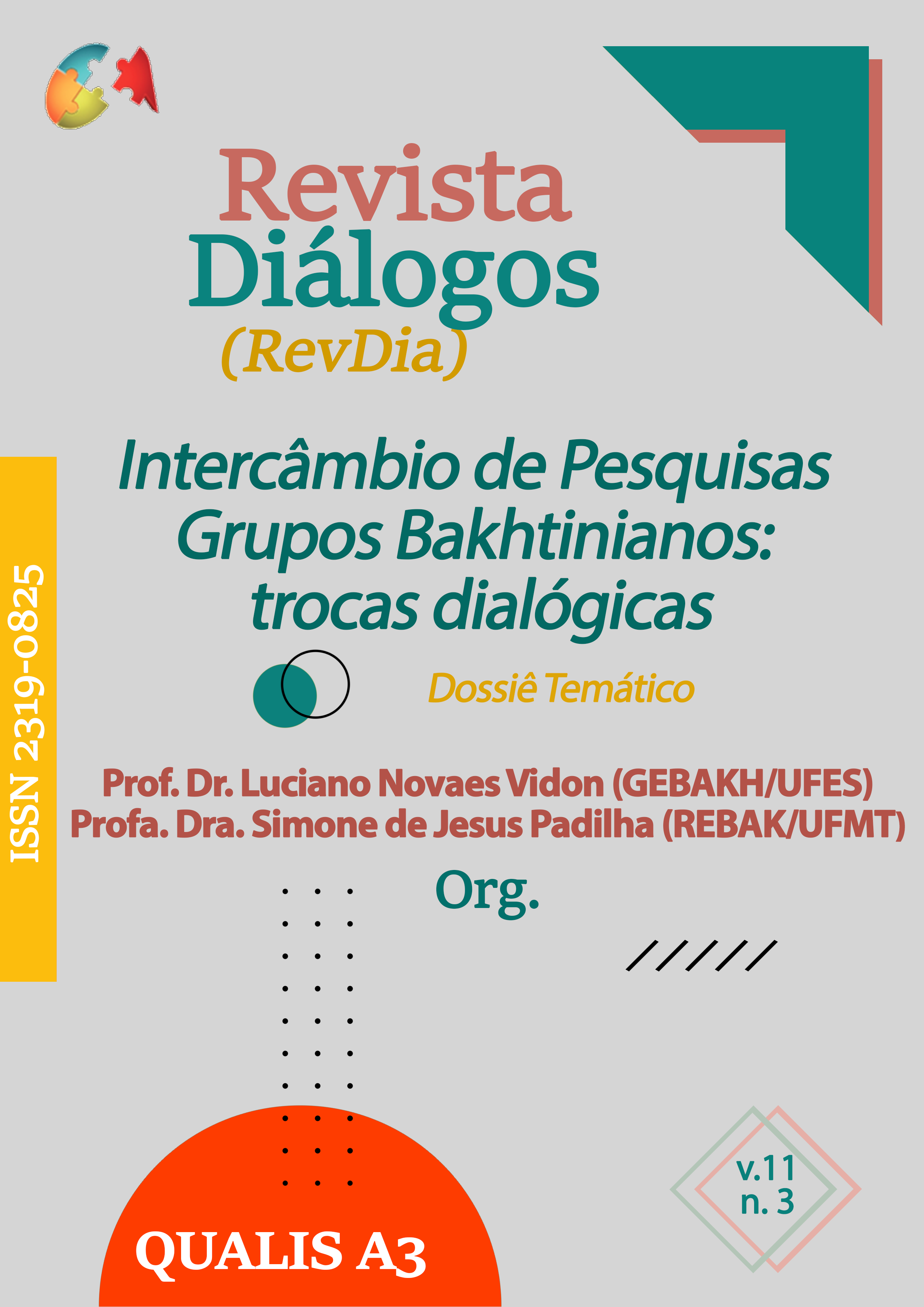Between grief and activism: a (dis)encounter of chronotopes in the film Prayers for Bobby (2009)
Keywords:
Prayers for Bobby; Verbivocovisuality; Chronotopes; Bridge/Viaduct; Road/Parade.Abstract
Prayers for Bobby (2009), directed by Russell Mulcahy and produced by Lifetime TV, is based on true events in the 1980s. It is set in Walnut Creek, California, near San Francisco, where Sigourney Weaver plays Bobby Griffith, a homosexual son played by Ryan Kelley. In the first moment, we have Mary Griffith, an evangelical woman who detests gay people. In the second moment, after Bobby has "revealed" himself and tried in vain to be cured, Bobby kills himself. After Bobby's suicide, Mary understands that her son did not choose to be gay, and from that moment on, she joins the Association of Parents, Family, and Friends of Lesbians and Gays (PFLAG) and becomes an activist in favor of the causes advocated by the LGBTQIAPN+ community. From this point of view, we intend to use verbal-visual language to examine the relationship of space and time, which, at first sight, appears to be distant from one another, but which, on closer inspection, we see as complementary. On the one side, we have the chronotop of the (dis)encounter, represented by the bridge/viaduct where Bobby's suicide took place. On the other side, we have the chronotop of the road/street, where different people gather to celebrate the San Francisco's Pride. We believe that such chronotopes are connected in a dialogical way. Thus, we draw on Luciane de Paula's concept of verbivocovisuality and, mainly Bakhtin's concept of chronotope.
References
AARONS, L. Prayers for Bobby: A Mother’s Coming to Terms with the Suicide of Her Gay Son. New York, US: Harper Collins, 1995.
AGAMBEM, Giorgio. Homo sacer: o poder soberano e a vida nua. Belo Horizonte: Editora UFMG, 2002.
AMORIM, M. Cronotopo e exotopia. In. BRAIT, B. Bakhtin: outros conceitos chaves. São Paulo: Contexto, 2012.
BAKHTIN, M. Teoria do romance II: As formas do tempo e do cronotopo; tradução, posfácio e notas de Paulo Bezerra. São Paulo: Editora 34, 2018.
BAKHTIN, M. Questões de literatura e de estética: a teoria do romance. São Paulo: Hucitec, 2002
BAKHTIN, M. Os gêneros do discurso. Tradução de Paulo Bezerra. 1ª ed. São Paulo: Editora 34, 2016.
BAKHTIN, M. Problemas da poética de Dostoiévski. Tradução de Paulo Bezerra. 5ª ed. Rio de Janeiro: Forense Universitária, 2010.
BEMONG, Nele et al. Bakhtin e o cronotopo: reflexões, aplicações, perspectivas; trad. Ozíris Borges Filho, et al. São Paulo: Parábola Editorial, 2015.
BERNARDET, Jean-Claude. O que é cinema. São Paulo: Brasiliense, 2000.
CLARK, K.; HOLQUIST, M. Mikhail Bakhtin. São Paulo: Perspectiva, 1998.
COSTA, Antonio. Compreender o cinema. trad. Nilson Moulin Louzada. São Paulo: Globo, 2003.
DIDI-HUBERMAN, G. O que vemos, o que nos olha. Trad. Paulo Neves. São Paulo: Editora 34, 1998.
FIORIN, J. L. Introdução ao pensamento de Bakhtin. 2. ed. São Paulo: Contexto, 2016.
GRILLO, Sheila Vieira de Camargo. Fundamentos bakhtinianos para a análise de enunciados verbo-visuais. Filol. Linguíst. Port., n. 14(2), p.235-246, 2012.
MARTIN, Marcel. A Linguagem Cinematográfica. Trad. Lauro Antônio e Maria Eduarda Colares. Lisboa: Dinalivro, 2005.
ORAÇÕES para Bobby. Direção: Russell Mulcahy. Produção: Damian Ganczewski. Estados Unidos: Lifetime Network, 2009. (90 min.).
PAULA, Luciane de e SERNI, Nicole Mioni. A vida na arte: a verbivocovisualidade do gênero filme musical. Raída, Dourados, MS. v.11, n.25, jan./jun.2017 ISSN 1984 4018
PAULA, L. de; STAFUZZA, G. (Org.). Prefácio. Da Análise do Discurso no Brasil à Análise do Discurso do Brasil: três épocas histórico-analíticas. Uberlândia: EDUFU, 2010a
VOLÓCHINOV, Valentin Nikolaevich. Marxismo e Filosofia da Linguagem: Problemas Fundamentais do Método Sociológico na Ciência da Linguagem. Tradução de Sheila Grillo e Ekaterina Vólkova Américo. 1ª ed. São Paulo: Editora 34, 2017.
Downloads
Published
How to Cite
Issue
Section
License

This work is licensed under a Creative Commons Attribution-NonCommercial-ShareAlike 4.0 International License.
Autores que publicam nesta revista concordam com os seguintes termos:
1) Autores mantém os direitos autorais e concedem à revista o direito de primeira publicação, com o trabalho simultaneamente licenciado sob a Licença Creative Commons Attribution que permite o compartilhamento do trabalho com reconhecimento da autoria e publicação inicial nesta revista.
2) Autores têm autorização para assumir contratos adicionais separadamente, para distribuição não-exclusiva da versão do trabalho publicada nesta revista (ex.: publicar em repositório institucional ou como capítulo de livro), com reconhecimento de autoria e publicação inicial nesta revista.
3) Autores têm permissão e são estimulados a publicar e distribuir seu trabalho online (ex.: em repositórios institucionais ou na sua página pessoal) a qualquer ponto antes ou durante o processo editorial, já que isso pode gerar alterações produtivas, bem como aumentar o impacto e a citação do trabalho publicado.





